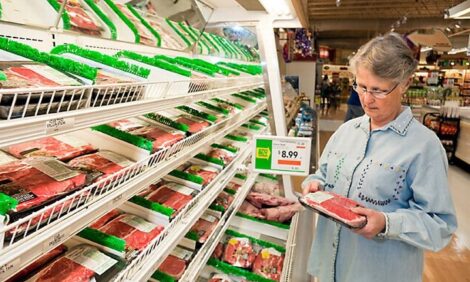



Self-Assessment Air Quality Awareness Tool
US - Livestock producers can now make sure they are doing their best to minimize air emissions with a new self-assessment tool developed by a team of researchers and Extension specialists from across the US.A three-year effort, led by Dr Wendy Powers-Schilling at Michigan State University, has resulted in the National Air Quality Site Assessment Tool. Funding was provided through a US Department of Agriculture-Natural Resources Conservation Service grant.
The NAQSAT, as the tool is called, was developed for use by livestock producers and their consultants to look at various management decisions and determine how those ultimately impact the air quality emissions from a particular site, said Dr Brent Auvermann, a Texas AgriLife Extension Service agricultural engineer in Amarillo and member of the team.
"This tool is for the voluntary environmental steward," Dr Auvermann said. "We want an individual producer to be able to use the tool to look at scenarios where the greatest impact can be made for every dollar expended."
Dr Auvermann, who worked with others representing 15 different universities, said his primary role was to create the beef segment of the tool, which targets six animal species or sub-species: swine, dairy, beef, broiler chickens, laying hens and turkeys.
The tool provides what the team has determined to be the most accurate, credible science currently available for methods to reduce airborne emissions of ammonia, methane, volatile organic compounds, hydrogen sulfide, particulate matter and odour.
The tool can be found at http://naqsat.tamu.edu. Upon entering the website, a producer picks an animal species and then follows a set of questions that allow a variety of "what if" scenarios to be evaluated. The producer can change answers to determine how a different management practice will affect emissions potential.
The website also includes a video on the use of the tool, which was narrated by Auvermann. A link can be found on the website or by going directly to http://vimeo.com/23497742 .
Dr Auvermann also provided the mathematical framework for the scoring technique that allows a producer to compare an individual operation under different management scenarios.
"We want a producer to be able to go through and answer questions about his operation and then determine what level of control might be achieved if he did things differently," he said. "And then the producer can use that information to score his operation as a percentage of maximum performance."
Comparing results from different scenarios can help the producer highlight any unintended consequences where a mitigation measure to reduce one component may inadvertently increase another concern, Dr Auvermann said.
For instance, if a producer elects to install a sprinkler system for dust control, the tool will show a decrease in dust potential but an increase in the potential for emissions of nitrous oxide, a potent greenhouse gas, he said.
The team designed the tool to provide information and education only. It is not intended to provide emissions data and/or regulatory guidance, according to the website.
The report generated by the tool cannot be used to compare one livestock facility to another and the information remains the private property of the operator, Dr Auvermann said. No data is stored on either the operation or the individual.
"One of the things we hope to do with this tool is forestall regulatory requirements," he said. "This is a tool for the progressive livestock and poultry producers interested in voluntary environmental stewardship efforts. Voluntary self-assessment and attentive management are the best ways to keep the government regulations at bay."
The project team also recently has begun a new three-year effort to update and improve the tool.
"We’re always learning something new," Dr Auvermann said. "We want the latest, best science at the public’s disposal."








